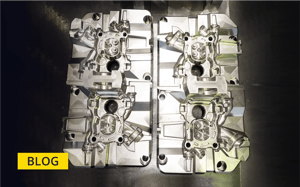Cornerstone
With Cornerstone, Less Is More: Less Effort, More Insights.
Empower your team in Engineering Data Analytics
Cornerstone software is an easy-to-use tool for engineers to create Experimental Designs, offering a user-friendly interface and a simpler, yet powerful data analysis tool for users.
Dealing with large datasets requires substantial computing power to ensure interactive and efficient work. Cornerstone enables you to share your insights with your team members in interactive visualizations so that all gain a common view on the data.

These customers already place their trust in us
Why your team need Cornerstone
Maintain your intuitive insights while delving into data exploration
Cornerstone software is a flexible tool, with a highly interactive user interface. It is applicable in multiple disciplines and industries such as manufacturing, research, development, quality assurance, and education. Cornerstone facilitates efficient experiment design, data exploration, dependency analysis, and actionable insight discovery—all immediately accessible, interactive, and without the need for programming.

- 01 Save time and money
- 02 Enhanced usability
Save time and money
- Reduce reporting effort by a direct link to MS Office (Word and PowerPoint) including a template functionality
- Reduce the number of experiments via statistically optimized experiment plans and speed up overall development
- Enhance experiment efficiency through structured planning, data collection, and analysis
- Automatically capture and reuse compact workflows
- Easy and fast correlation detection in the data even when working with large datasets
- Quickly identify usable process models and conduct root-cause analysis through exploratory and visual data analysis
- Easily investigate the impact of process variable noise on process responses
Gain more information with minimal effort through enhanced usability
- Understand results quickly and easily
- Benefit from example use cases
- Engineer oriented execution of statistics tasks without being burdened with statistics details
“Cornerstone enables you to quickly draw the right conclusions from a huge flood of data. You can assess data better and make the right decision faster.”
— Fabian Müller, Cornerstone Team Leader
How Cornerstone benefit your business
Efficient work with a consistent and smart approach

Practical for daily use in engineering

Workmaps—your analysis canvas

Design of experiments—leverage your data to its fullest potential
Design of Experiment (DoE)
Design of Experiments (DoE) is a structured approach to planning experiments to efficiently and effectively investigate the relationship between factors and the outcomes of interest.
DoE in Cornerstone supports advanced techniques like constraints in design space, inclusion runs, accessible candidate set for algorithmic designs, and methods to perform robust (Taguchi) or mixture designs.
Exploratory Data Analysis
helps you to extract the full potential of your data with interactive graphical tools like brushing and labeling. Cornerstone offers various basic and advanced graph types to adequately visualize your data.
Regression
is a statistical technique used to model the relationships between your dependent (responses) and independent variables (predictors). You can create and refine regression models that describe one or multiple responses as a function of one or more scaled or categorical predictors.
It supports arbitrary high order expansion, stepwise regression, Box-Cox transformation, and residual analysis in an unsurpassed compact workflow.
MANOVA
stands for Multivariate Analysis of Variance. It offers analysis techniques to compare groups based on multivariate data. You can investigate whether the groups are different and how the differences are determined by the analyzed variables. MANOVA can also be used for discriminant analysis.
Principal Components Analysis
is used to simplify and interpret complex datasets. It is particularly useful for reducing the dimensionality of data while retaining most of the variation present in the original dataset. It can also be combined with Regression Analysis in case of correlated predictors that otherwise cannot be adequately analyzed (Regression on principal components).
Sensitivity Analysis
helps decision-makers understand the implications of uncertainty in models and make more informed decisions based on the sensitivity of outcomes (responses) to different factors (predictors).
In Cornerstone, the Sensitivity Analysis can be combined with Regression to enhance the interpretability, robustness, and reliability of the regression model.
Summary Statistics and Tests
are numerical values that summarize and describe the main features of a dataset. They include measures of central tendency (such as mean, median, and mode), measures of dispersion (such as range, variance, and standard deviation), and other descriptive metrics (such as quartiles and percentiles).
Test statistics are used to determine whether to reject the null hypothesis during hypothesis testing. Cornerstone supports many different situations to apply hypothesis tests. Besides, the results are informative and don’t require further interpretation of the values.
Distribution Fitting and Process Capability
involves selecting a probability distribution that best describes the variability in the data generated by a process. Distribution Fitting helps in understanding the underlying probability distribution of process data, which is crucial for process control, prediction, and decision-making.
Process Capability analysis assesses the ability of a process to produce output within specified tolerance limits. By combining distribution fitting with process capability analysis, you can better understand the variability in your processes and assess the ability to meet specifications, thereby facilitating continuous improvement efforts and enhancing overall quality performance.
Control Charts
are graphical tools used in Statistical Process Control (SPC) to monitor and analyze the stability and performance of a process over time. As an integral component of the Six Sigma methodology, control charts play a vital role in overseeing and enhancing processes.
By utilizing these concepts of process improvement, the approach intentionally targets the tasks of engineers to ensure effective implementation and sustained progress
R Integration
grants access to the R environment, famous for statistical computing and graphics. This synergy empowers users to leverage cutting-edge statistical methods alongside powerful visualizations (brushing) for enhanced data analysis.
Explore the R integration in Cornerstone, here.
Cornerstone Extension Language (CEL)
We speak your language
Tailor Cornerstone to meet your specific needs. With Cornerstone Extension Language (CEL), you can easily create applications, new dialogs, menus, and other analysis tools.
The open architecture that is coupled with CEL makes it possible for the software to meet almost any specific requirements your organization may have.
Cornerstone Add-On: CEDA
The Cornerstone add-on CEDA provides advanced functionalities for automatic data analysis. Thanks to its concept of dynamic Workmaps, CEDA allows you to automatically perform multiple actions on different data columns, apply self-defined rules, and re-run scripts on different data sets.
Cornerstone’s CEDA uses an advanced data format, which can be enriched with metadata, and provides additional statistical
analysis tools such as Cp / Cpk analyses, signature plots, and much more.
Empower Your Teams with Intuitive, Scalable, and Interactive Data Analysis Solutions
Cornerstone helps engineers design experiments, analyze data, and gain insights—without coding. It supports manufacturing, R&D, and quality teams with structured workflows, reusable analyses, and clear visualizations. Let’s discuss how our solutions can support your operations and industry challenges.
CornerstoneR and the R Interface
The R Integration
Dealing with large datasets requires substantial computing power to ensure interactive and efficient work. Cornerstone enables you to share your insights with your team members in interactive visualizations so that all gain a common view on the data.
CornerstoneR
Cornerstone software is an easy-to-use tool for engineers to create Experimental Designs, offering a user-friendly interface and a simpler, yet powerful data analysis tool for users.
Enhance Your Data Analytics with Cornerstone
Explore on how to utilize Cornerstone CEDA in webinar series
Topics:
- Extending Cornerstone Workmaps to general workflows
- Recording and maintaining your analytic workflows in an editable format
- Having reusable routines available for future scenarios in which — from today's point of view — unknown variables may also be involved
- Automation of your analytical tasks
- Restricting output on only relevant findings
“By integrating Cornerstone with camLine’s flagship product LineWorks SPACE, you establish a powerful ecosystem for effective and detailed analyses of process and quality data for your production.”
— End-to-end process optimization
Explore More Pages
Discover valuable resources—from our latest news, events, and webinars to white papers—that offer insights into manufacturing automation and innovation.






Let’s Discuss Solutions with camLine's Experts
Our team is ready to deliver tailored solutions that streamline your production, improve product quality, and maximize efficiency across your operations. Tap into camLine’s decades of expertise in digital transformation to overcome your manufacturing challenges.



